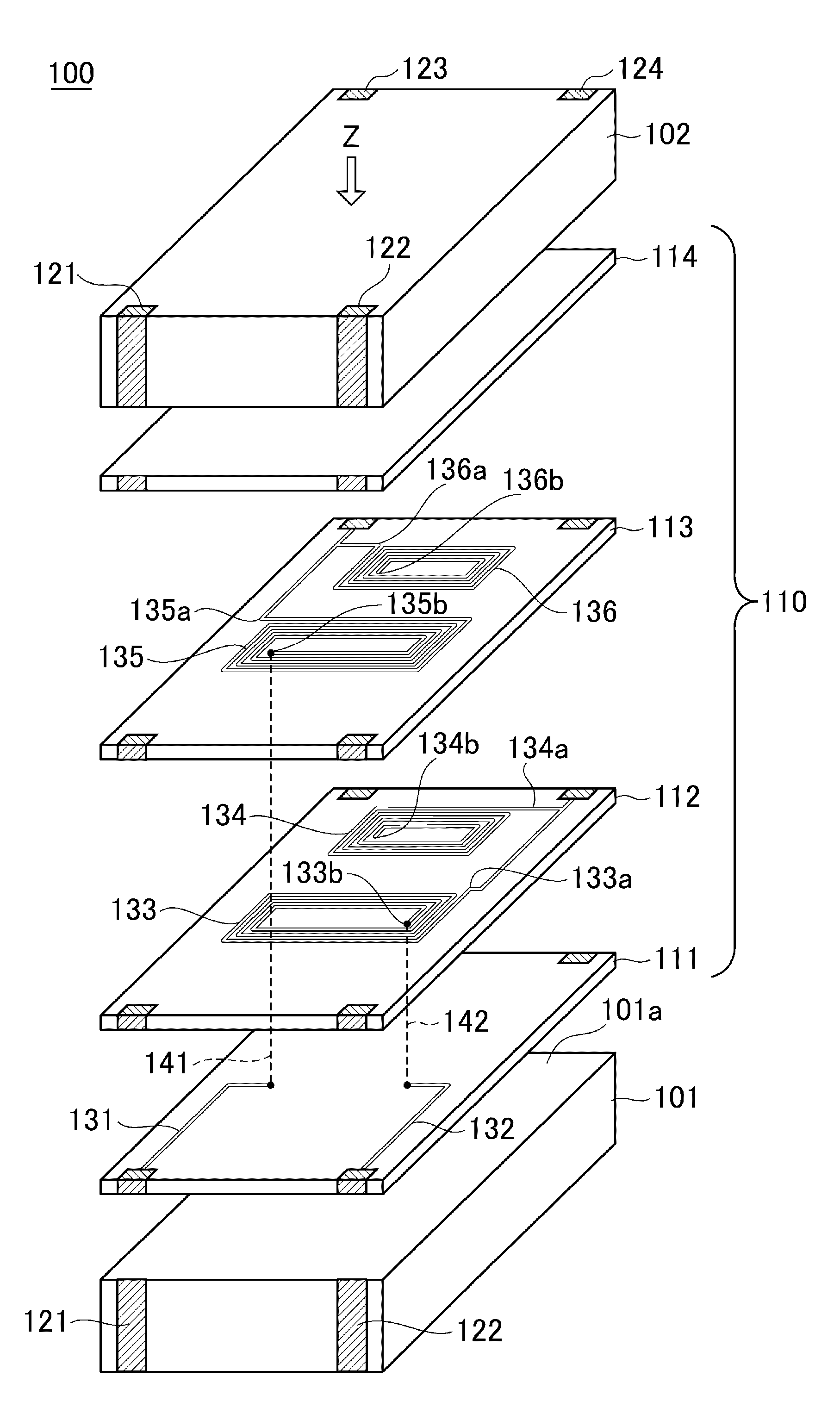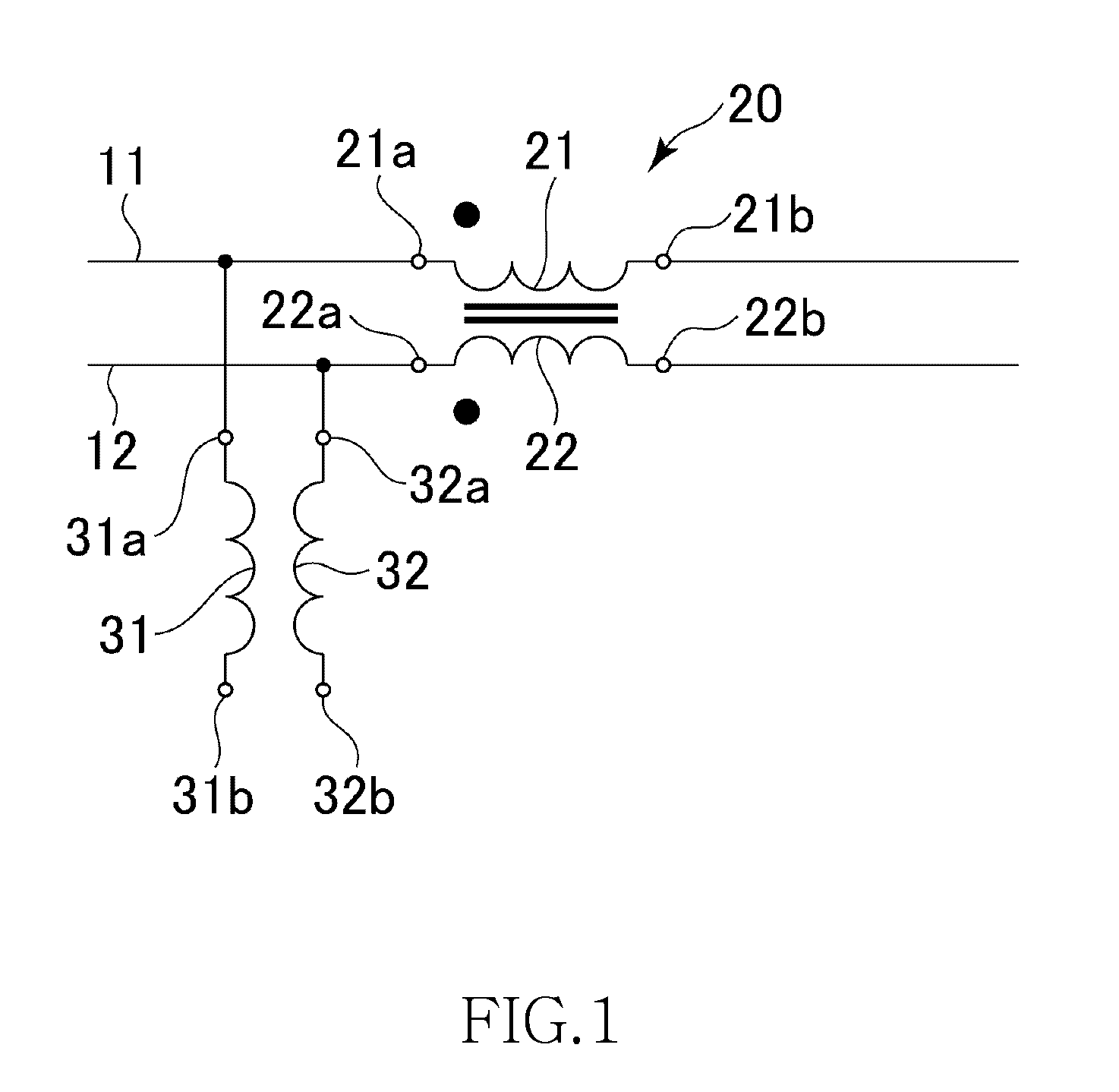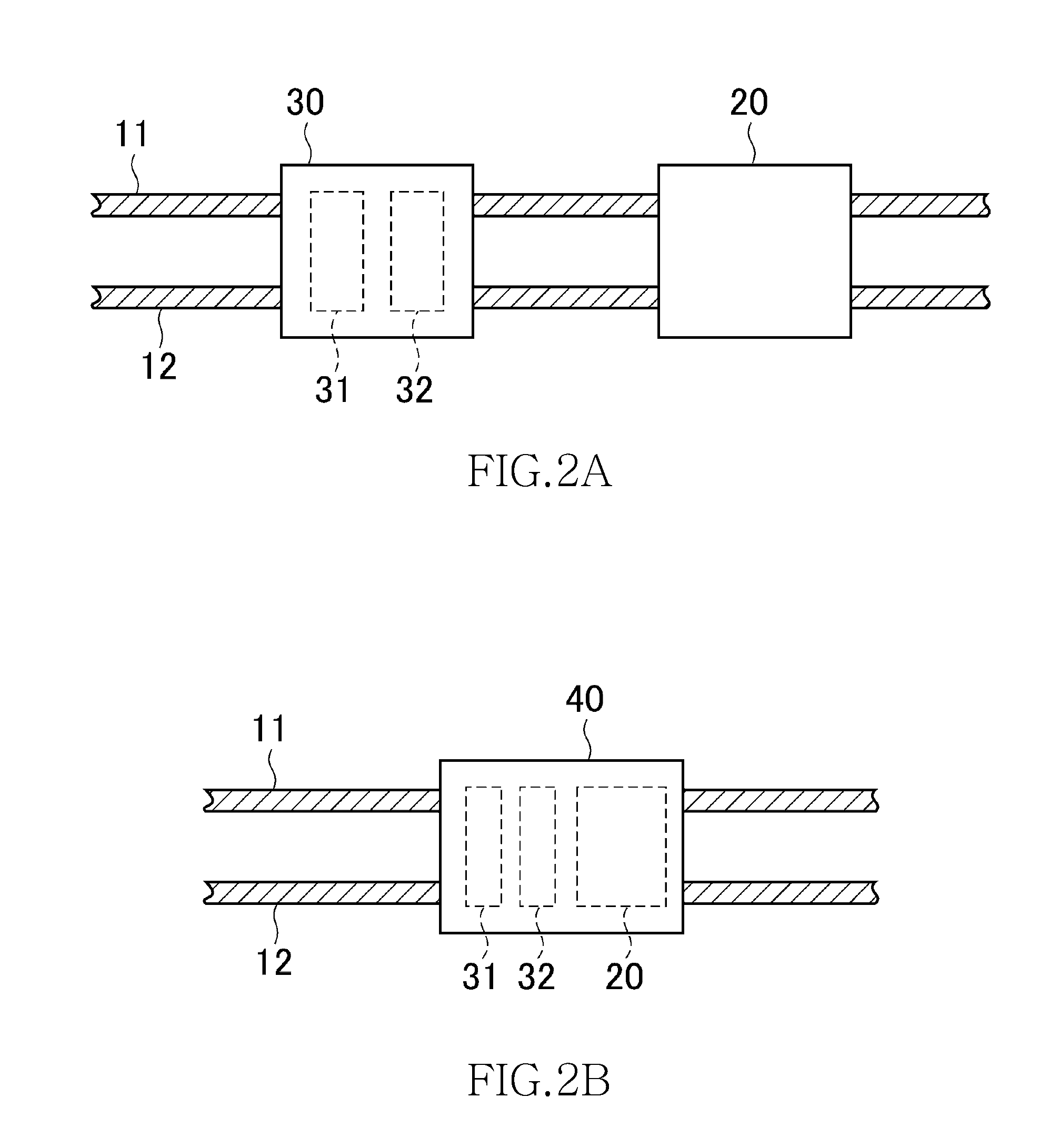Common mode noise filter
a common mode and filter technology, applied in the direction of current interference reduction, line-transmission details, electrical equipment, etc., can solve the problems of communication sensitivity degrading, insufficient insertion of a common mode filter into a pair of signal lines, etc., to reduce the height of a product, prevent an increase in production cost, and reduce the planar size of the componen
- Summary
- Abstract
- Description
- Claims
- Application Information
AI Technical Summary
Benefits of technology
Problems solved by technology
Method used
Image
Examples
first embodiment
[0063]FIG. 5 is a perspective view schematically illustrating the outer appearance of a common mode noise filter 100 according to the present invention.
[0064]As illustrated in FIG. 5, the common mode noise filter 100 according to the present embodiment is so-called a surface mount type chip component and includes magnetic substrates 101, 102 and a functional layer 110 sandwiched by the magnetic substrates 101 and 102. Further, four terminal electrodes 121 to 124 are formed on the outer circumferential surface of a stacked body constituted by the magnetic substrate 101, functional layer 110, and magnetic substrate 102. The magnetic substrates 101 and 102 each play a role of physically protecting the functional layer 110 and serves as a closed magnetic path of the common mode filter. As a material of the magnetic substrates 101 and 102, a sintered ferrite, a composite ferrite (resin containing ferrite powder) or the like can be used. It is particularly preferably to use a sintered fer...
second embodiment
[0080]FIG. 9 is a transparent perspective view schematically illustrating only conductive patterns included in the functional layer of a common mode noise filter 200 according to a
[0081]As illustrated in FIG. 9, in the common mode noise filter 200 according to the second embodiment differs from the abovementioned common mode noise filter 100 in that the winding direction from the outer circumferential end of the coil pattern 134 to the inner circumferential end thereof as viewed in Z direction is clockwise direction, and the winding direction from the outer circumferential end of the coil pattern 136 to the inner circumferential end thereof as viewed in Z direction is counterclockwise direction. The other points are the same as those in the common mode noise filter 100. Accordingly, the same components are denoted by the same reference numerals, and overlapping descriptions are omitted.
[0082]With the above configuration, the coil patterns 134 and 136 are magnetically coupled to each...
third embodiment
[0084]As illustrated in FIG. 10A, in the common mode noise filter 300 the winding direction from the outer circumferential end of the coil pattern 134 to the inner circumferential end thereof as viewed in Z direction is counterclockwise direction, and the winding direction from the outer circumferential end of the coil pattern 136 to the inner circumferential end thereof as viewed in Z direction is also counterclockwise direction. However, the coil pattern 134 is connected, at its inner circumferential end 134b, to the terminal electrode 124, and the outer circumferential end 134a is opened. The other points are the same as those in the common mode noise filter 100. Accordingly, the same components are denoted by the same reference numerals, and overlapping descriptions are omitted.
[0085]With the above configuration, the coil patterns 134 and 136 are magnetically coupled to each other in the opposite directions. Therefore, the common mode noise filter 300 according to the present e...
PUM
 Login to View More
Login to View More Abstract
Description
Claims
Application Information
 Login to View More
Login to View More - R&D
- Intellectual Property
- Life Sciences
- Materials
- Tech Scout
- Unparalleled Data Quality
- Higher Quality Content
- 60% Fewer Hallucinations
Browse by: Latest US Patents, China's latest patents, Technical Efficacy Thesaurus, Application Domain, Technology Topic, Popular Technical Reports.
© 2025 PatSnap. All rights reserved.Legal|Privacy policy|Modern Slavery Act Transparency Statement|Sitemap|About US| Contact US: help@patsnap.com



